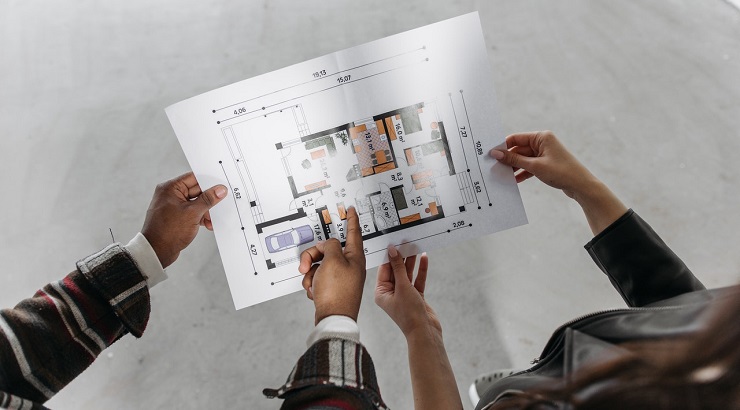Features
Submittals in Construction
Everything you should know about submittals in construction.

What is a submittal in construction, or how do you define submittals?
Submittals in construction are documents prepared by project managers and submitted to design teams for approval of equipment and materials before their acquisition.
In most cases, a submittal in construction is presented in various formats, such as shop drawings, material data, cut sheets on equipment, and product data.
These documents are used by the architect and engineer to confirm that the right materials and quantities will be applied to the project in compliance with the contract.
Benefits of submittals in construction
The main purpose of a submittal in construction is to provide essential checks and balances during the construction phase of a project.
This helps to ensure that the upcoming structure conforms to the design envisioned in the construction documents, while meeting or exceeding the expectations of the project owner.
Types of submittals in construction
There are many types of standards that architects and engineers might want subcontractors to follow when making their submittals.
That being said, common types of submittals in construction include:
- Shop drawings
- Product samples
- Material data
1. Shop drawings
Drawings, diagrams, blueprints, and schedules are all classified as shop drawings. These documents demonstrate the work that will be undertaken by the subcontractor.
Shop drawings vary based on the magnitude of a construction project as well as the individual or entity that is managing the development.
However, what is needed should be outlined in the agreement.
2. Product samples
Once the contractor decides on the products, the construction manager is required to take samples for analysis. These samples could be specific samples of tiles, paint, etc.
Product samples offer the design team a chance to look at the envisioned final aesthetics and quality choices for the entire product.
In certain instances, the contractor may create a mock-up for the project. This may involve building a sample wall and painting it as a physical example of what might be constructed.
3. Material data
Material data, also known as product data, is the technical information about the materials – usually provided by the manufacturer. This includes dimensions, performance, warranty, etc.
This information helps the team to determine whether the material will work for the project. This verdict is based on whether the product will uphold the set building standards.
RELATED: What Is RFI in Construction?
In addition to the above, submittals may also be presented as engineering calculations, as-built drawings, mockups, vendor information, or warranties and manuals.
4. Engineering calculations
Calculations are essential to showing that the work of a contractor aligns with its intended use. In critical projects like hospitals, electrical contractors are often required to submit voltage drop and load assessments.
This ensures the electrical system is well-designed to handle the expected demands, preventing the potential life-threatening consequences of power outages.
5. As-built drawings
As-built drawings represent the final documentation submitted by a contractor upon completing their work.
In contrast to shop drawings, which precede installation, as-builts portray the completed project and include approved changes to specifications, as well as the placement of products, components, and assemblies.
6. Mockups
Mockups, serving as scaled or life-size models of construction elements, are crafted using the actual project materials and methods.
They are created to validate both the aesthetic and workmanship aspects of the product. In cases where transporting large or cumbersome mockups is impractical, photos may be submitted for an in-person review.
Alternatively, on-site work, constituting a segment of the project, can be paused for a submittal review, documented with photos and processed similarly to other submittals.
7. Vendor information
Project owners, particularly on large commercial or public projects, often face limited visibility into the subcontractors and suppliers hired by the general contractor for specialized tasks.
To address this, the owners may request a comprehensive list of all subcontractors and suppliers involved in the project, along with their contact details and a description of their scope of work.
8. Warranties & manuals
Contractors and suppliers must provide warranty terms for project materials, and operation manuals detail system use and maintenance.
If reviewed in construction submittals, executed warranties may be requested during project closeout.
Submittal procedure
Submittals are crucial for project accountability and efficiency.
Understanding the process is key, and various construction submittal templates are available for different projects.
The following steps outline the submittal process:
1. Pre-construction:
Organize a pre-construction conference to foster open discussion and address questions related to the submittal process.
This enhances understanding of standards, minimizes delays, and improves communication among project participants.
2. Schedule:
Set a detailed submittal schedule to efficiently manage time.
This ensures the architect or engineer has adequate time to assess materials before construction starts, avoiding a “first come, first served” approach.
3. Submittals prep:
Following the established schedule, subcontractors gather the required documentation and samples for the submittal process.
This comprehensive preparation ensures compliance with pre-construction requirements, facilitating a smooth submission process.
4. Review:
Architects or engineers conduct a thorough review of materials and supporting documentation to evaluate their impact on the project.
This process leads to prompt approval or disapproval, allowing subcontractors to either proceed with work or make necessary adjustments for resubmission.
FAQs
What are the three types of submittals in construction?
Submittals are often categorized as follows:
- Preconstruction submittals.
- Construction submittals.
- Closeout and maintenance submittals.
What is a document submittal?
Submittals in construction are papers prepared by project managers and submitted to design teams for equipment and material approval before purchase.
What is the difference between an RFI and a submittal?
Submittals provide detailed information beyond contracts, ensuring subcontractors grasp the general contractor’s design intent. RFIs, on the other hand, seek clarification in project design but cannot alter the design intent.












